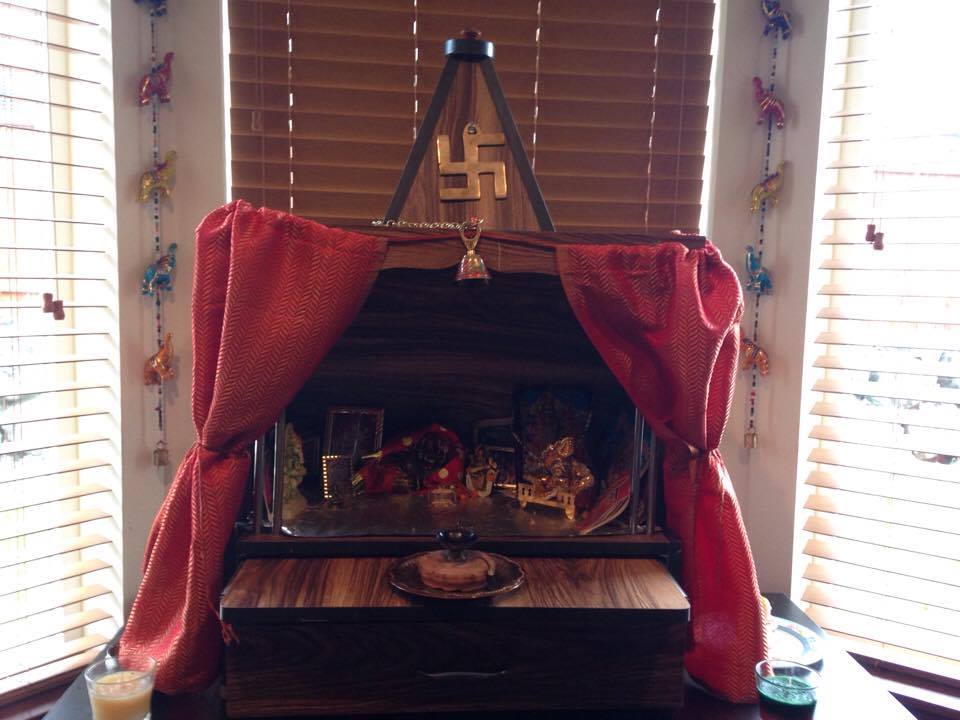Home Altar – Mandir

A mandir enlightens the house and the minds of those living in the house so no house is complete without a domestic mandir or temple.
The Hindu Mandir houses the idols of various Hindu gods and goddesses, called murtis, before which the family prays daily. When a family moves into a new home, the first thing they do—before moving in the furniture— places a murti. This murti is often of Lord Ganesh because he is considered the god of beginnings and also the god who removes obstacles.
Murtis are made of metal (often bronze) or even clay. Along with murtis, mandirs often include pictures of gods and goddesses, called tasvir in Hindi, either plastered to adjoining walls or framed and kept on stands. These murtis and tasvirs of gods and goddesses are placed on a red or orange cloth because these colors are considered auspicious in Hinduism.
Mandir should be housed in a small pyramid-shaped structure called a mandap, which can be made of many materials but is most commonly wood or metal. The mandap’s pyramid-shaped roof with a pointed top is important, as it is believed to attract magnetic energy. Hindu temples have a similar pyramid shape, and the primary deity of the temple is placed under this roof. The magnetic energy attracted by the roof’s shape is believed to infuse the murti with energy.
Hindus traditionally sit to pray, a mandir is always set up on the floor or on a low shelf. In front of the mandir is placed a mat called an aasan in Hindi, on which the devotee should sit. The aasan is believed to help devotees concentrate on god and also keeps their clothes clean while sitting on the floor.
Every Hindu mandir includes a central lamp called a Deepak that is lit morning and evening or sometimes left constantly lit. Hindus light the Deepak in the mandir in the morning as soon as they shower, and then again in the evening between six and seven. The morning Deepak symbolizes the morning light that has dispelled the night’s darkness. It is also lit to banish ignorance and darkness of the mind with light. In the evening, the Deepak is lit once again to light up the house, which will soon be consumed by darkness.
Suggested Read: Why Do We Have A Prayer Room
Placing the Mandir in Home
The placement of the mandir in the house is also very important. Hindus should dedicate a separate puja (worship) room to the gods, where the mandir is placed and the family worships either individually or as a group. However, adjustments can be made when such a room is not available.
The mandir should always be placed in the purest, or shudh, room. Hindus generally believe that sexual activity and menstruating women are impure. For this reason, Hindus never place the mandir in the master bedroom, where a couple is sexually active. In the absence of a separate puja room, the next best place to keep the mandir is the kitchen.
The direction of Mandir in Home
The direction that the mandir faces is equally important. A mandir traditionally should be kept in a direction where the person praying should face north or the east while offering prayers. However, some of my Hindu informants said that the murtis in the mandir should face west, so that the devotee faces east while worshiping them. South is the kingdom of Yama, the god of death, so by facing South while doing pooja, one is welcoming death, illness, and disease into the house so the devotee should never face south while praying.






